When it comes to wrapping up a contractor project, ensuring a smooth handover is crucial for both parties involved. A well-structured project handover checklist can save time, prevent miscommunication, and provide clarity on outstanding tasks. This checklist serves as a roadmap, guiding you through the essentials required for a successful transition. So, let's dive in and explore the key components of an effective contractor project handover checklist!

Project Details and Scope
The contractor project handover checklist serves as an essential document in the transition process of construction projects, ensuring that all aspects are covered before the client formally accepts the work. Key details include the project name, an identifier number, and associated geographic location, typically including city and state. The overall scope summarizes critical components such as the architectural design features, structural elements, landscape architecture, and utility installations. Comprehensive documentation such as as-built drawings reflects the final construction as compared to the original design. Additional items include compliance certificates from local authorities, warranty information for materials and installations, and operation and maintenance manuals for building systems like HVAC (Heating, Ventilation, and Air Conditioning) systems. Finally, a snag list identifies minor defects that require rectification before final approval, ensuring that the project meets contractual obligations and quality standards.
Completion and Inspection Status
The contractor project handover checklist is essential for ensuring successful completion and inspection of construction projects. This document lists key areas such as structural integrity, adhering to building codes, electrical systems, plumbing fixtures, and overall compliance with design specifications. A thorough review of milestones such as completion dates, materials used, and labor hours invested is crucial for accountability. Inspection status must be updated, indicating sign-offs from relevant authorities, including local building inspectors or project managers, confirming that all work meets safety and quality standards. Proper documentation, including warranties and manuals for systems installed, ensures the client receives comprehensive information for future maintenance and operation of the facility.
Documentation and Certifications
A comprehensive project handover checklist for contractors should include essential documentation and certifications to ensure a smooth transition. Key documents include the final project plans, specifications, and as-built drawings that reflect any modifications made during construction. Safety certifications, such as OSHA compliance certificates, are crucial for confirming adherence to workplace safety regulations. Additionally, warranties for materials and equipment should be included to guarantee durability and reliability. Quality assurance documentation, such as inspection reports and test results, provides verification of standards met. Project-related permits and approvals from local authorities ensure all legal requirements are satisfied. Finally, an operation and maintenance manual should be provided, detailing important information about the building systems, maintenance schedules, and contact details for service providers, facilitating efficient management and upkeep of the project post-handover.
Equipment and Asset Handover
A comprehensive Equipment and Asset Handover checklist ensures all essential tools and machinery are accounted for and in optimal condition. Each piece of equipment, whether heavy machinery such as excavators and bulldozers or smaller tools like drills and wrenches, should be inspected for functionality and safety compliance. Record the serial numbers, purchase dates, and current operating conditions alongside maintenance histories. It is imperative to detail any outstanding service requirements or documentation like manuals. Ensure proper calibration has been performed, particularly for precision instruments used in the project. Each asset should be logged into a centralized inventory management system for traceability and easy reference. The physical handover should occur on-site at the project location, often a construction site or facility, with both contractor and client representatives present to finalize acceptance and avoid future disputes.
Client Acceptance and Sign-off
The contractor project handover checklist ensures a smooth transition of completed projects, confirming acceptance by clients. Detailed documentation includes key items such as project scope summary, completion dates, and final inspection results. Essential equipment, like HVAC systems or kitchen appliances, requires verification to meet manufacturer standards. Compliance with local regulations, including safety codes and building permits, is crucial for legal acceptance. Client sign-off, gathered through formal acknowledgment, signifies satisfaction with workmanship and adherence to timeline agreements. This process helps to maintain a positive contractor-client relationship while safeguarding future business opportunities.


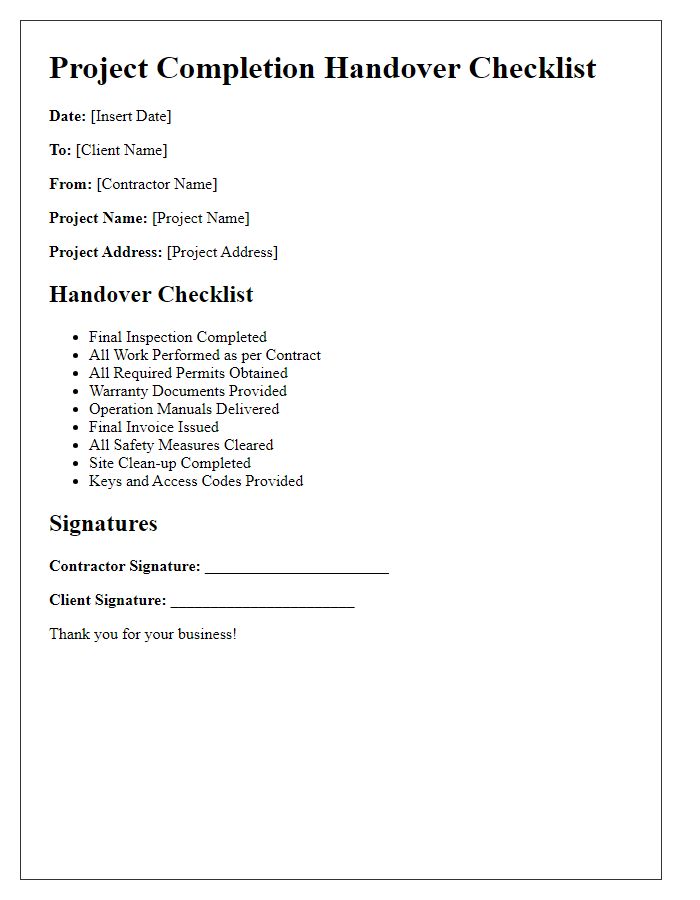
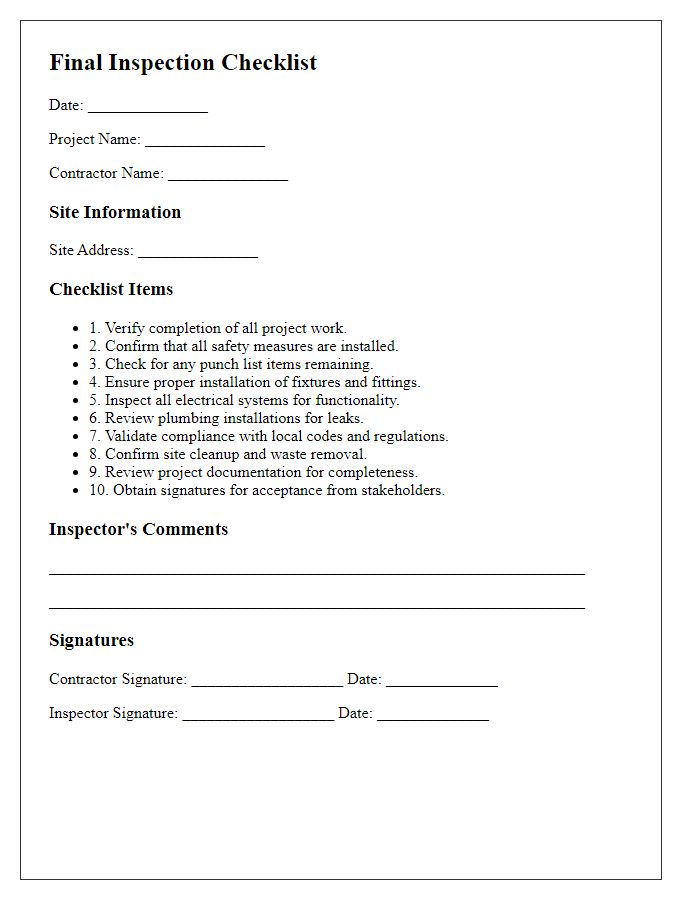
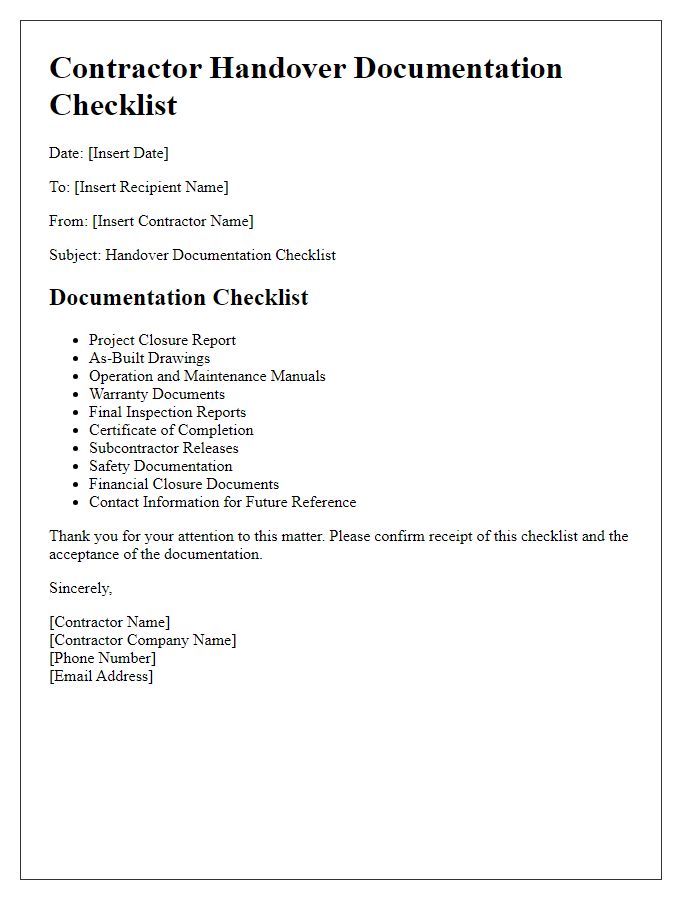
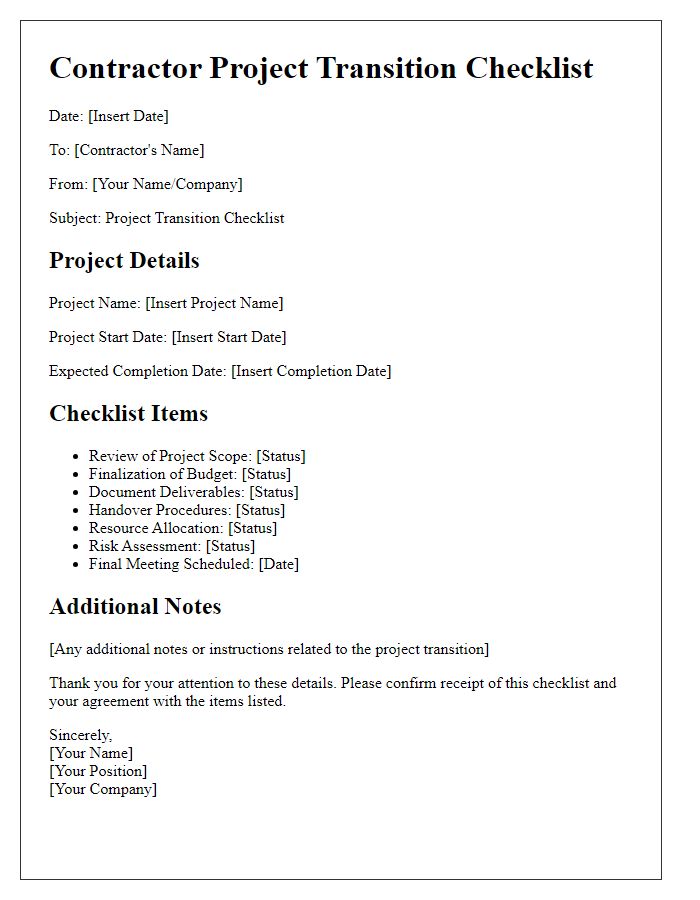

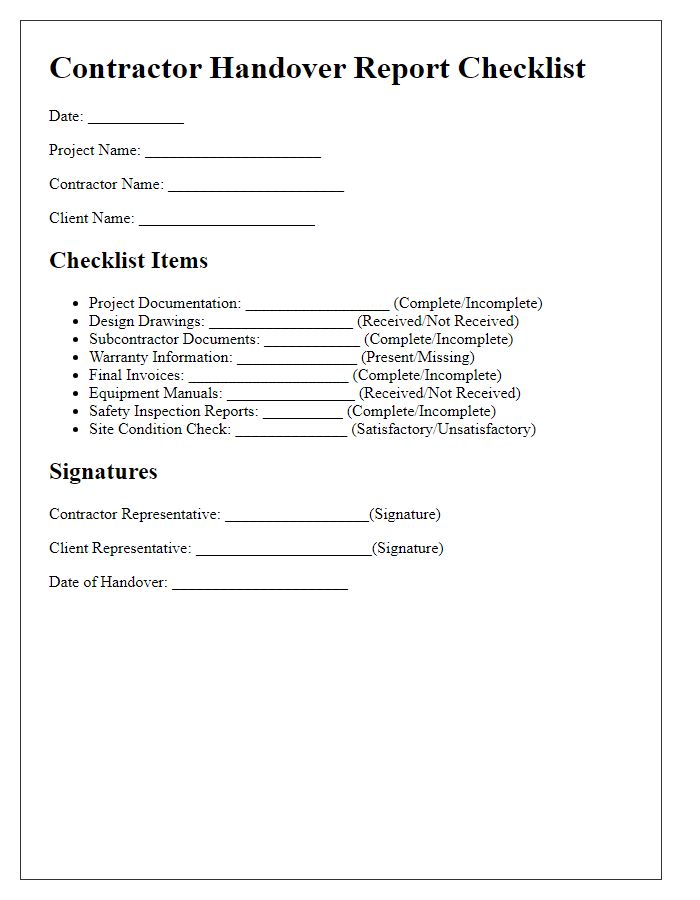
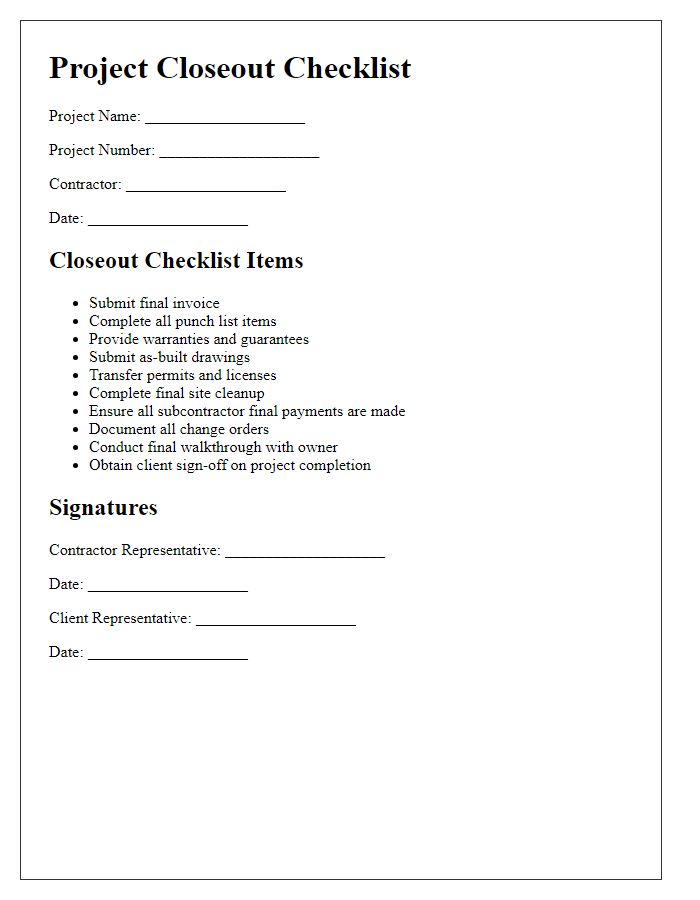
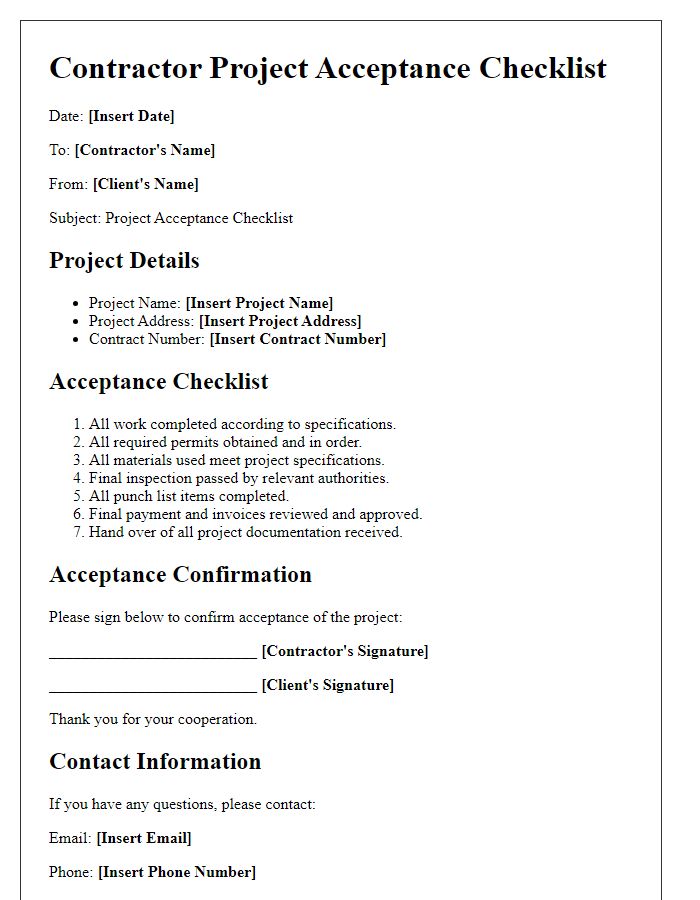
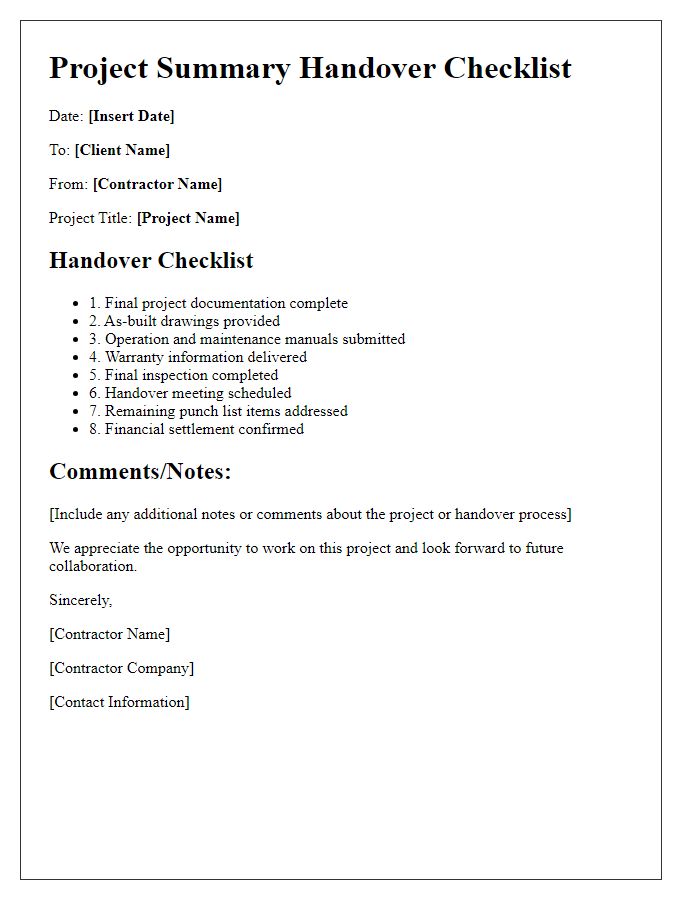


Comments